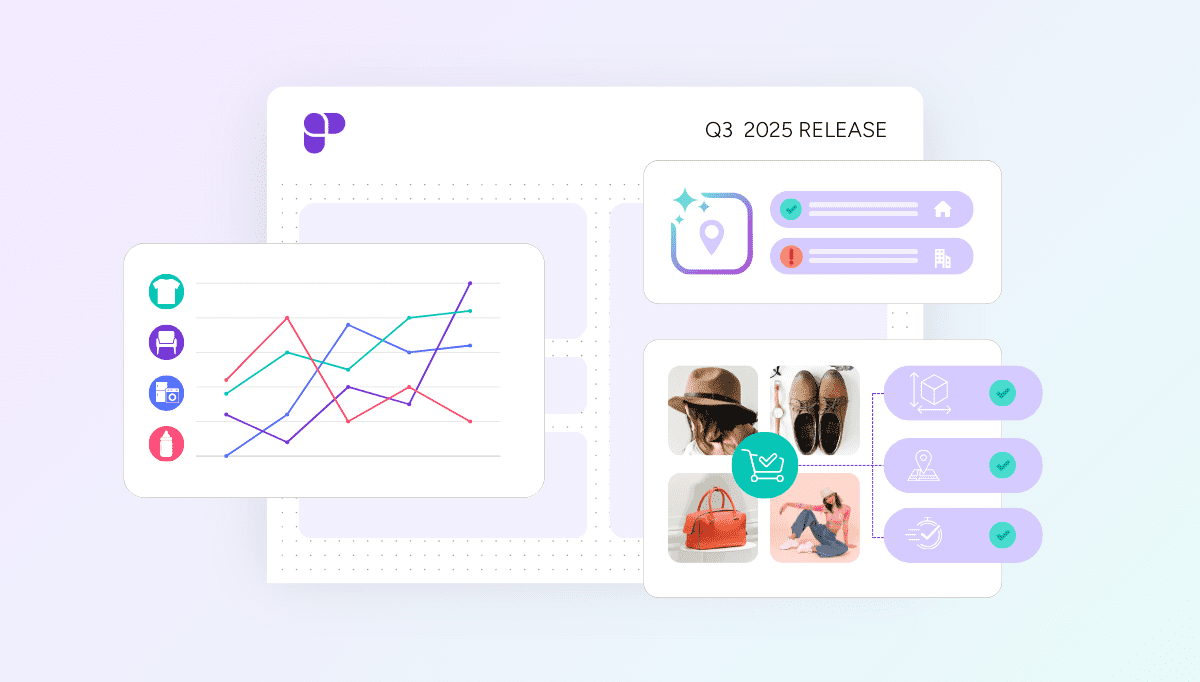Annual ecommerce sales have surpassed $1 trillion, yet 60% of retailers and brands still struggle with profitability. This striking contradiction was at the heart of a recent webinar I moderated, featuring three industry experts who brought unique perspectives on scaling challenges.
Rithum’s Senior Sales Director Nathan Bird joined Lauren Rowinski, General Manager of Multi-Channel Solutions at Walmart, and Matt Ligon, Senior Director of Channel Partnerships for Walmart Marketplace to discuss this profitability paradox.
Here are the three biggest takeaways from their conversation that are still sticking with me:
Takeaway #1: Growth Without Foundation Creates Operational Chaos
Although it sounds counterintuitive, success can actually slow brands down. Nathan explained the common scenario many fast-growing brands face:
“Growth usually means more channels, more SKUs, more people, and more data sources. And without a strong foundation, teams are left doing patchwork: updating product information, chasing inventory numbers, or merging reports manually to understand performance.”
– Nathan Bird, Senior Sales Director, Rithum
This fragmentation creates what our experts called the “Stack Overflow,” where teams are logging into five to six different systems daily just to manage their ecommerce operations. According to live polling during the webinar, 60% of attendees were experiencing exactly this challenge.
And the hidden costs go far beyond manual labor. Lauren emphasized how disjointed systems impair decision-making speed: “Acting and operating with speed can set sellers and brands apart. Adoption of new APIs, products, and listing strategies really start to compound over time.”
The solution isn’t necessarily fewer tools. It’s ensuring those tools communicate effectively. As Nathan noted: “What’s critical is that your systems are talking to each other and not past each other, and most importantly, speaking the same language.”
Takeaway #2: Visibility Is Essential to Profitable Scaling
Visibility, specifically, the ability to see profitability by SKU and by channel in real-time, emerged as a common thread between stories of scaling successfully in the webinar.
Nathan shared a case study of Flat River Group, an ecommerce distributor in the toy category. “As their business grew, so did their operational complexity. While they had logistics and supply chain in place to support growth, they lacked the technical infrastructure to integrate with new marketplaces at speed.”
Using unified platform automation, Flat River expanded to six new marketplaces, including Walmart, Target, eBay, Macy’s, Michaels, and Oriental Trading, in just eight months, all without hiring additional team members.
The key differentiator wasn’t just automation itself, but the visibility it provided. “The majority of clients we speak to struggle to see profitability by SKU and by channel, and are often flying blind,” Nathan explained. “That’s usually where the operational cracks start and where the fastest improvements come from.”
This visibility enables what Matt called “playing offense” rather than defense: “You really want to operate in a state where you’re playing offense,” he said, emphasizing how unified data enables brands to act with confidence rather than react to problems.
Takeaway #3: Multi-Channel Infrastructure Is Becoming Table Stakes
The third major insight focused on the evolving role of fulfillment and logistics in ecommerce success. Rather than viewing different marketplaces as separate challenges, according to Walmart and our own Rithum team, winning brands are treating them as components of a unified customer experience.
Lauren highlighted how Walmart’s approach exemplifies this shift:
“Through our Multi-Channel solutions, sellers can leverage their Walmart Fulfillment Services inventory for orders from other marketplaces like Amazon, eBay, Shein, Temu, and social media shops, like TikTok and Instagram.”
– Lauren Rowinski, General Manager of Multi-Channel Solutions at Walmart
This strategy addresses one of the webinar’s key findings: fragmented fulfillment creates poor customer experiences and drives up costs. The solution is about meeting customers where they are in their purchasing journey.
As Matt explained: “Rather than trying to change customer behavior, you can really insert yourself directly in their preferred purchasing path. Many consumers start with product searches directly on marketplaces, bypassing search engines or individual brand websites.”
The numbers support this shift toward multi-channel infrastructure: Walmart alone sees approximately 270 million customers and members shop across their stores and e-commerce channels each week.
The brands we see succeeding in 2025 are building systems to reach customers across all marketplace touchpoints. Want to dive deeper into how they do it? Watch the full webinar recording to hear more from these experts.
(Some quotes have been lightly edited for context and clarity.)
Jennifer Connally is Product Manager at Rithum.



